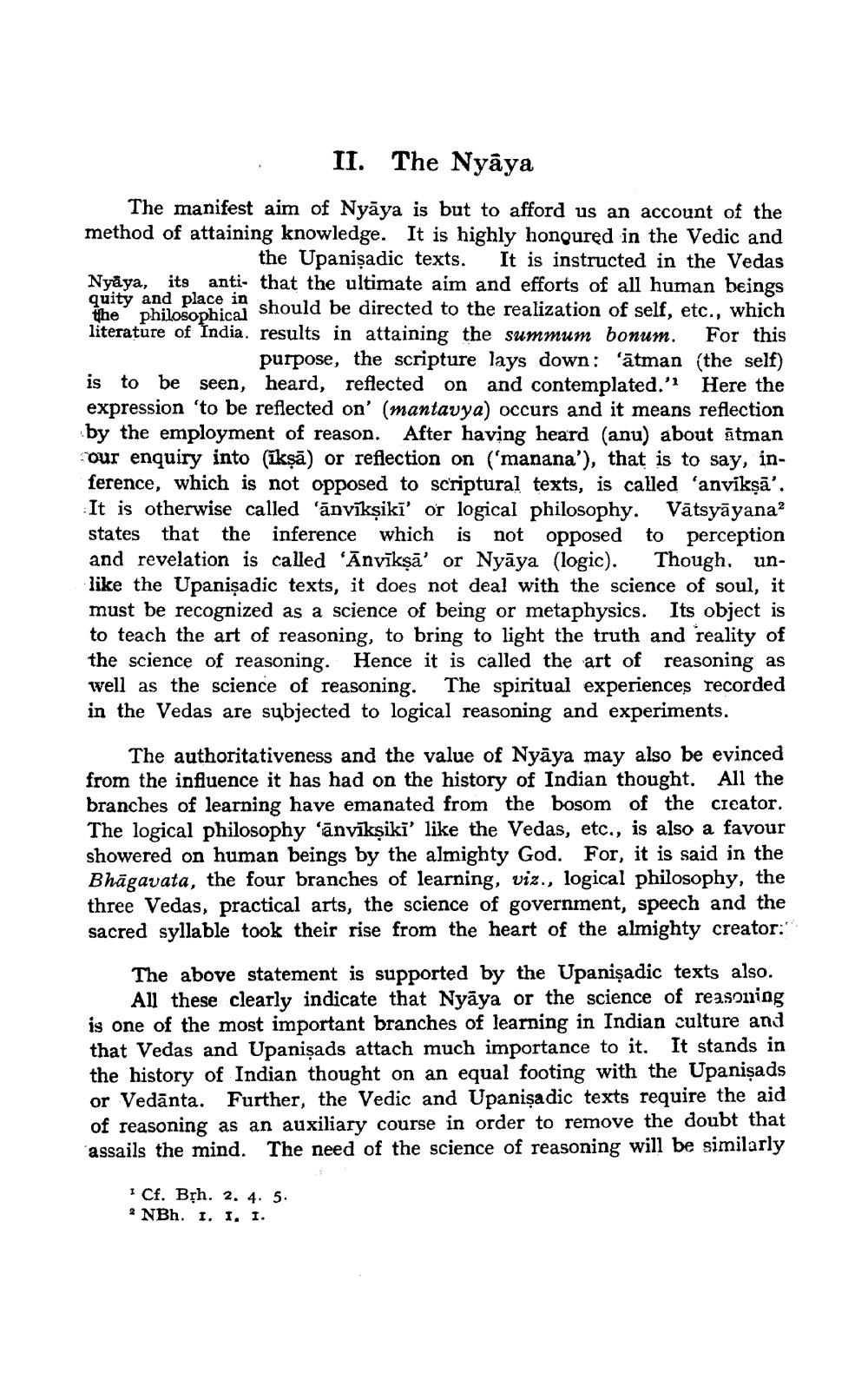________________
II. The Nyaya
The manifest aim of Nyaya is but to afford us an account of the method of attaining knowledge. It is highly honoured in the Vedic and the Upanisadic texts. It is instructed in the Vedas Nyaya, its anti- that the ultimate aim and efforts of all human beings quity and place in should be directed to the realization of self, etc., which the philosophical literature of India. results in attaining the summum bonum. For this purpose, the scripture lays down: 'atman (the self) is to be seen, heard, reflected on and contemplated." Here the expression 'to be reflected on' (mantavya) occurs and it means reflection by the employment of reason. After having heard (anu) about atman our enquiry into (ikṣā) or reflection on ('manana'), that is to say, inference, which is not opposed to scriptural texts, is called 'anvikṣā'. It is otherwise called 'anvikṣiki' or logical philosophy. Vātsyāyana2 states that the inference which is not opposed to perception and revelation is called 'Anvikṣā' or Nyāya (logic). Though. unlike the Upanisadic texts, it does not deal with the science of soul, it must be recognized as a science of being or metaphysics. Its object is to teach the art of reasoning, to bring to light the truth and reality of the science of reasoning. Hence it is called the art of reasoning as well as the science of reasoning. The spiritual experiences recorded in the Vedas are subjected to logical reasoning and experiments.
The authoritativeness and the value of Nyaya may also be evinced from the influence it has had on the history of Indian thought. All the branches of learning have emanated from the bosom of the creator. The logical philosophy 'anvikṣiki' like the Vedas, etc., is also a favour showered on human beings by the almighty God. For, it is said in the Bhagavata, the four branches of learning, viz., logical philosophy, the three Vedas, practical arts, the science of government, speech and the sacred syllable took their rise from the heart of the almighty creator:
The above statement is supported by the Upanisadic texts also. All these clearly indicate that Nyaya or the science of reasoning is one of the most important branches of learning in Indian culture and that Vedas and Upanisads attach much importance to it. It stands in the history of Indian thought on an equal footing with the Upanisads or Vedanta. Further, the Vedic and Upanisadic texts require the aid of reasoning as an auxiliary course in order to remove the doubt that assails the mind. The need of the science of reasoning will be similarly
1 Cf. Brh. 2. 4. 5.
2 NBh. I. I. I.




